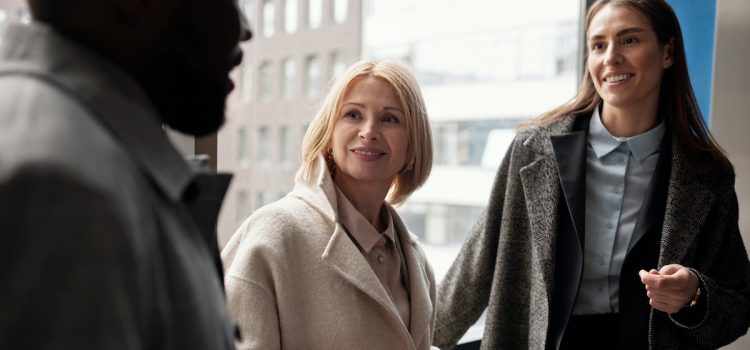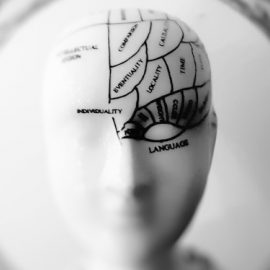

This article is an excerpt from the Shortform book guide to "Mastery" by Robert Greene. Shortform has the world's best summaries and analyses of books you should be reading.
Like this article? Sign up for a free trial here .
Do you know what your boss is thinking and feeling? Do your teammates really trust each other?
Never underestimate the impact other people have on your life in general and your career in particular. You must have social know-how to get ahead in your field. This requires seeing people as they truly are, which can be difficult when people try to hide their true selves. You need to learn how to read a person—a skill that’s helpful in professional and personal life.
Here’s why reading people is important and how to do it better.
How to Read a Person
Greene argues that “true” mastery requires social know-how. This is because other people can make or break your career trajectory:
- If you’re socially naive, ill-intentioned people can exploit you or hinder your progress.
- If you’re socially skillful, you can avoid conflict and maintain harmonious relations in your field. This allows you to focus on your work, and it can open doors to new opportunities.
You can master the technical aspects of a skill without social know-how. However, Greene asserts that the idea of the “lone genius” is a myth—every great master reaches genius by engaging and collaborating with others in her field.
| The Myth of the Lone Genius While Greene emphasizes that social-know helps you avoid trouble and focus, it’s also true that a healthy social life can enrich your creative life. It’s a common misconception that artists or scientists succeed on their own—rather, many collaborate and draw inspiration from the wider community of artists. In other words, living within a social network of artists, philosophers, or scientists is like being part of a wider ecosystem, within which there are numerous perspectives, experiences, and insights that cross-pollinate with each other. While some individuals stand out as the most exceptional, they don’t do it alone. For instance, think of the ancient Greeks: They created places such as Aristotle’s Lyceum, where people gathered to learn, teach, and engage in dialogue. Thus, any Greek philosopher had a rich community of creative thinkers within which to develop his ideas. In contrast, imagine if Aristotle had no other philosophers to dialogue with and no background of past philosophy upon which to develop his ideas. |
Seeing People as They Really Are
Greene suggests that a key element of social know-how is developing a realistic perspective of human nature and discarding any social naivete left over from childhood. He argues that people probably aren’t as good as you think, and he recommends that you avoid trying to change them. Instead, learn to work with them or make use of them.
(Shortform note: In contrast to Greene’s advice to view people as obstacles, Leil Lowndes recommends in How to Talk to Anyone that you practice putting others at ease. Since most people worry about being liked, showing people that you like them creates easeful social interactions. This can also open doors to opportunities you’d otherwise miss out on.)
To develop this realistic perspective, learn how to read a person. Do so by dropping your preconceptions and observing them. Since we present our best faces in public, Greene recommends spending a few months learning to see through that mask and grasp someone’s true character. He gives three tactics:
- Tactic #1: Observe how he communicates. Greene explains that people reveal their emotions, attitude, and beliefs in how they communicate. Observe a person’s tone of voice, choice of words, and body language.
- Tactic #2: Step into his shoes. Imagine how he feels, and look for commonalities like shared emotional pains—these will give you a better sense of who he is.
- Tactic #3: Observe his behavior. Pay attention to how he behaves in every area of life, such as how he acts around his superiors and his spouse. Observe his level of discipline and work ethic. Each of these hints further at who he is and why.
| Body Language Tells All In How to Talk to Anyone, Leil Lowndes argues body language and nonverbal cues communicate much of what there is to know about someone. Within the first few seconds of seeing someone, we typically judge their personality type, levels of self-confidence, and social status—and these impressions are often accurate. In addition to Greene’s observational techniques, consider Lowndes’s tactics for creating a positive first impression: Stand with good, relaxed posture. Appearing confident and open makes you look approachable, and it also helps you feel more sure of yourself. Make eye contact. Lowndes says that prolonged eye contact signals interest, and it can encourage attraction. However, use this with caution: Aggressive eye contact can come off as arrogant or weird. Pretend you’re already good friends with the other person. Lowndes says that this helps you relax and send positive signals automatically. |

———End of Preview———
Like what you just read? Read the rest of the world's best book summary and analysis of Robert Greene's "Mastery" at Shortform .
Here's what you'll find in our full Mastery summary :
- The clear path anyone can follow to achieve mastery
- An explanation of the three stages of mastery
- How learned conventions and familiar ways of thinking reduce creativity






